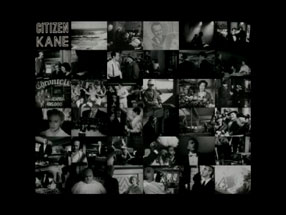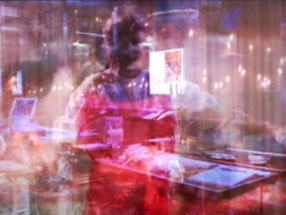The End is a work which accentuates primarily the very structure of the film work. The structure of the film resembles the operation carried out by John Cage, who composed in 1952 a piece for any instrumental set – the famous 4’33”. Also the length of the film is approximately that of Cage’s piece. 4 minutes and 20 seconds seemed to the artist as the optimal time span, though – as he admits himself – he was thinking about holding on to 4 minutes and 33 seconds, which would make the analogy too in-your-face, however. But a certain structure was repeated here – that what came earlier as a result of chance, here acquired the character of a structural scaffolding. Just like in Cage’s 4’33’’ there are 3 moments that break the silence, The End features three accents which disturb the visual sphere.
Silence, like inscriptions forming part of the composition, is often unnoticed and neglected by the viewer. The End is a play on our perceptual habits. The viewer waits for the film to begin, as it turns out – in vain, but then they are involved in reflection. The End is a film which employs classic self-referential procedure, which is to draw the viewer’s attention to the role, meaning and structure of the film as such.
References: A. Hirszfeld, Szczerbowskiego obraz zwielokrotniony, [in:] Wizje i Re-wizje. Wielka Księga estetyki w Polsce, Cracow 2007; A. Hirszfeld, Robert Szczerbowski, [in:] New Phenomena in Polish Art after 2000, Warsaw 2007.
(AH)
Year: 2005
Duration: 4'16''
Language: no language
Source: BETA SP
© Robert Szczerbowski
Acquisition: deposit
Ownership form: deposit




